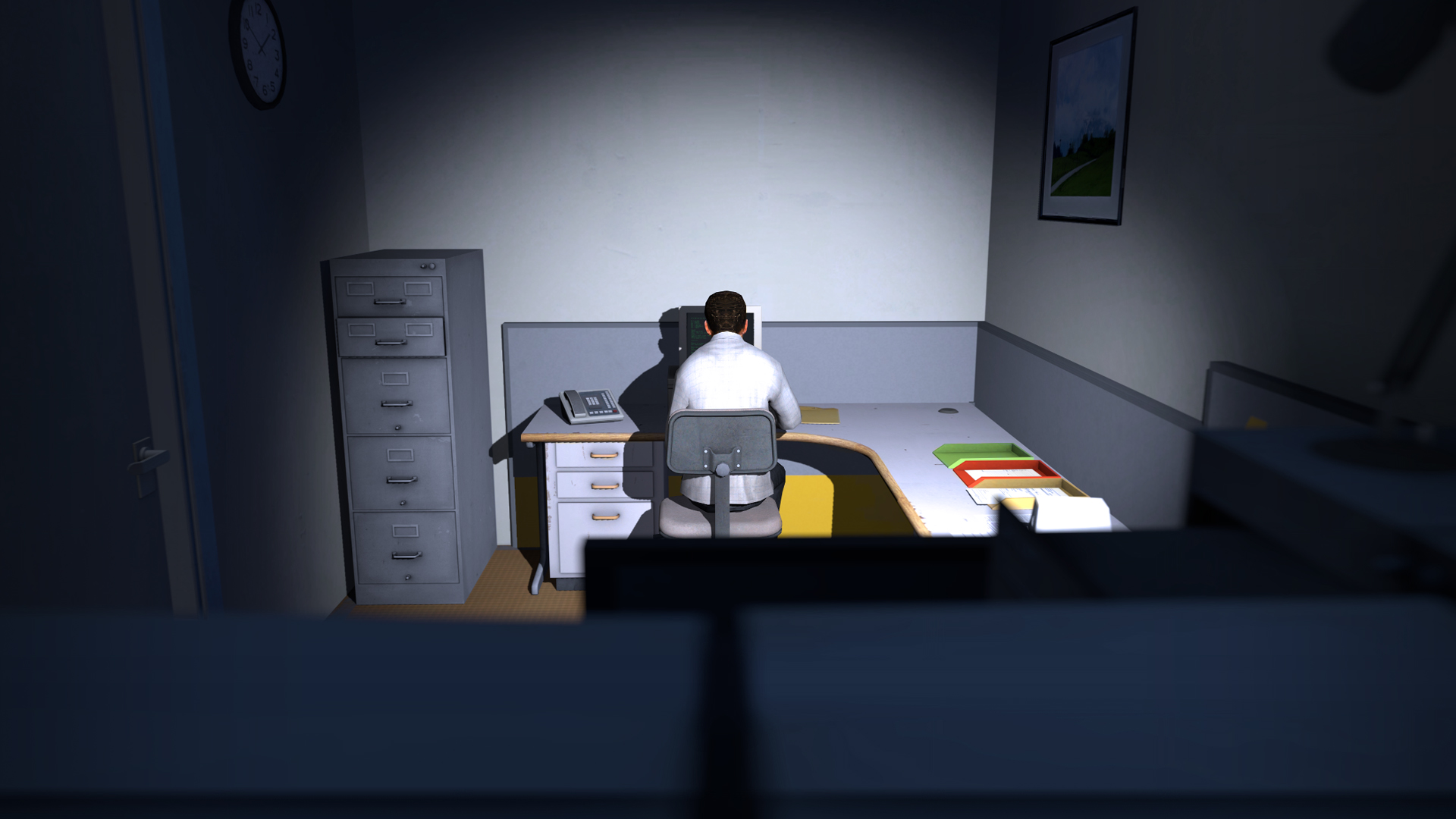Ever wondered if your decisions in life meant anything? If you actually had the freedom to make your own choices? If your life just restarted day after day as if nothing had ever happened? If that’s the case, meet Stanley, the protagonist of a little story called “The Stanley Parable.”
Stanley’s job is composed of sitting at his desk in a generic office building, waiting for prompts on his computer monitor and simply doing exactly what those prompts tell him to do. Unlike most people, who would slam their heads against the wall for some entertainment, Stanley strangely adores his occupation as he eagerly waits for his next order. One day, however, Stanley waits for hours and gets nothing on the black monitor. To add to the unsettling situation, his fellow co-workers have apparently vanished without a trace, leaving him isolated. Stanley wanders through the building complex — and this is where the fun really starts.
Originally a modification on Valve’s “Half-Life 2” game, this stand-alone indie remake by Galactic Cafe explores the idea of making choices. The story takes numerous twists as the player is given the choice to go on completely different paths and discover entirely new endings within each unique storyline.
What carries the title is the ever-prominent narrator, voiced by Kevan Brighting, who delivers witty remarks and constantly breaks the fourth wall with every action the player takes, all while directly telling him or her what to do. He cleverly mocks you when you ignore him, he becomes genuinely offended when you completely disregard his advice and he even (surprisingly) cheers you on in certain situations. For example, if the player stays in the employee lounge long enough, he remarks how creepy the player is and that the missing coworkers are the player’s fault. Just hearing the man talk is great enough to experience this game, and if you love the narrative attitude in Valve’s “Portal” series, you will get a kick out of Brighting.
With “The Stanley Parable,” there are countless situations to discover through the actions you may take, whether you’re doing the opposite of what the narrator wants or simply doing nothing long enough. Every potential action has already been taken into account by the game’s creators and that is why this title is so incredible. The isolated feeling of this game and the empty office setting just add to the charm of it.
Many times, random surprises –– like a secret room that has nothing to do with the main plot, and an ending where Stanley literally dies because he ponders too much on his existence –– will leave you wondering what just happened and eager to find out more. Even after you beat one story, the game restarts and makes you play and think again. Adding to this replay value are the subtle changes that occur within the game, like the narrator’s ever-changing lines, and the secret input command on several of the office monitors in multiple playthroughs — all of which make you feel like there’s something more to discover in this story.
Unfortunately, if you don’t like a story-driven game, then “The Stanley Parable” isn’t for you. As an indie title (no publisher money here), the visual spectacle of big-budget titles is absent; the controls are also rather plain, as you can only move around and perform simple interactions with doors and such. However, it doesn’t matter. The main fun about this game is making your own choices, finding new secrets and plot points, noticing small changes within the environment and simply being immersed in the game’s numerous plots.
If you love this kind of element in a video game, I highly recommend you check out “The Stanley Parable” (or try the free demo, which is its own little ball of fun). I can hardly describe it without spoiling anything, since the meat of the experience is constantly discovering hidden goodies and plot twists for every replay. As the game puts it, “The end is never the end is never the end is never the end.”
Rating: 4 stars









